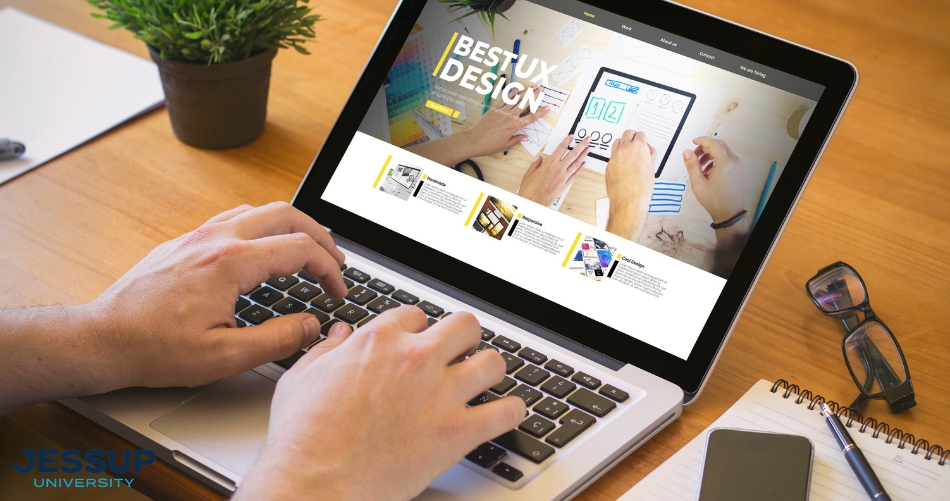The Most Effective Sorts Of Website Design to Boost User Experience and Involvement
In the ever-evolving landscape of electronic interaction, the effectiveness of Web layout substantially affects customer experience and involvement. Various design methods, such as minimalist, responsive, and interactive designs, each offer distinct advantages that can cater to diverse user requirements.
Minimal Web Layout
As electronic landscapes end up being significantly chaotic, minimal Web design has become an effective approach to enhancing customer experience. This layout ideology focuses on simpleness, concentrating on crucial components while removing unneeded diversions. By using sufficient white area, simple navigation, and a minimal shade combination, minimalist style fosters clarity and routes customer interest to crucial material.
The core principle of minimalist Web layout is to produce a seamless communication for individuals. By minimizing cognitive tons, users can promptly comprehend information without really feeling overwhelmed. This direct method not only improves use however also motivates engagement, as visitors are more likely to discover a site that is simple and aesthetically appealing to browse.
Additionally, minimalist style usually stresses typography and imagery, utilizing these elements tactically to communicate messages successfully. In significance, minimal Web layout is not simply a fad; it is a thoughtful methodology that recognizes the significance of user-centered style.
Receptive Website Design
In today's diverse digital environment, responsive Web design has come to be important for producing a seamless individual experience across a wide variety of tools. As users gain access to internet sites on smartphones, tablets, desktops, and laptops, the ability of a site to adapt its format and web content to different screen dimensions and resolutions is vital.
Responsive website design utilizes flexible grids, photos, and CSS media inquiries to make certain that Web content is offered ideally, no matter the device utilized. This technique not only boosts the visual allure of a web site however also significantly boosts functionality. Users are most likely to engage with a website that provides a regular experience, as it gets rid of the irritation of having to focus or scroll excessively.
In addition, internet search engine, including Google, focus on mobile-friendly websites in search positions. By adopting receptive design, services can improve their exposure and get to a broader audience. This approach also streamlines website maintenance, as a solitary variation of the site can accommodate all gadgets, reducing the need for numerous variations. In summary, responsive website design is a fundamental method that boosts user experience, engagement, and general contentment.
Interactive Website Design
Responsive website design lays the groundwork for improving individual experience, however interactive website design takes this a step even more by engaging customers in a much more dynamic way - Aligned Position Web Design. By incorporating elements such as animations, clickable models, and real-time responses, interactive website design mesmerizes users, drawing them right into a richer surfing experience
This strategy not just promotes interaction but also urges individuals to check out content proactively instead than passively consuming it. Techniques such as gamification, where customers gain benefits for completing jobs, can dramatically improve the time invested on a site and improve total complete satisfaction. Additionally, interactive features can simplify intricate info, making it a lot more absorbable and pleasurable.

Integrating interactive style components can also cause higher conversion rates, as users are most likely to engage with a website that proactively includes them. Aligned Position Web Design. Eventually, interactive website design transforms individual experiences right into memorable trips, making certain that site visitors return time and again
Flat Design
Defined by its minimalistic approach, flat style stresses simplicity and functionality, removing away unnecessary elements and focusing on essential attributes. This layout viewpoint focuses on use, ensuring that users can navigate user interfaces easily and effectiveness. By using a clean visual, level style eliminates the clutter commonly found in a lot more ornate styles, thus boosting customer concentrate on content and performance.
The characteristic of level style depends on its use bold read this post here shades, straightforward typography, and geometric forms. These elements add to an aesthetically enticing interface that is both approachable and modern-day. Furthermore, level design cultivates a feeling of clearness, enabling users to recognize important activities and details without distraction.
In addition, level design is specifically effective in responsive Web style, as its simpleness converts well throughout different devices and display sizes. The absence of intricate structures and gradients minimizes packing times, which is critical for maintaining individual involvement. As electronic landscapes proceed to progress, flat style stays a pertinent option for developing user-friendly internet sites that improve general experience. By concentrating on vital features, flat design not just satisfies user requirements but likewise encourages smooth communication, making it a vital element of efficient website design approaches.
Flexible Website Design
Adaptive Web style customizes the customer experience by producing numerous repaired formats tailored to different display sizes and tools. Unlike receptive design, which fluidly adjusts a single format, flexible layout employs distinctive layouts for particular breakpoints, guaranteeing optimal presentation on various platforms. This approach allows developers to concentrate on the unique qualities of each gadget, enhancing usability by providing specifically what users require based on their context.
Among the key benefits of flexible Web style is its capacity to optimize tons times and performance. By serving customized content and pictures that fit the user's gadget, web sites can reduce information usage and improve loading speeds. This is specifically useful for customers with slower connections or restricted information plans.

Additionally, adaptive design helps with a much more consistent and regulated branding experience. Because designers create several formats, they can make certain that the aesthetic elements line up with the brand name's identification throughout various platforms - Aligned Position Web Design. This results in a natural customer experience, improving engagement and advertising user retention
Verdict
Finally, the assimilation of minimal, receptive, and interactive website design concepts significantly enhances individual experience and involvement. Minimal layout promotes quality and emphasis, while receptive design makes sure versatility across various tools, advertising availability. Interactive layout captivates individuals with dynamic aspects, motivating expedition and personalization. Collectively, these style comes close to add to the development of user-friendly settings that not just boost fulfillment but also drive higher conversion prices, highlighting their vital significance in contemporary website design techniques.

Minimal style promotes clarity and focus, while receptive design makes certain adaptability across numerous gadgets, advertising accessibility. news Collectively, these style approaches contribute to the development of easy to use settings that not just enhance complete satisfaction but also drive higher conversion prices, highlighting their critical value in modern Web design techniques.